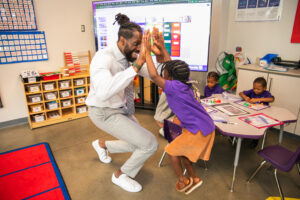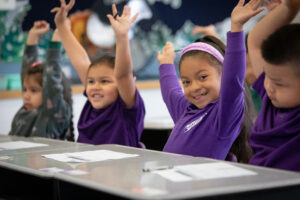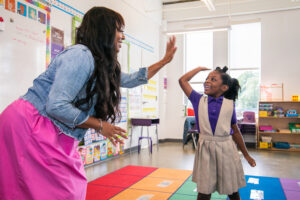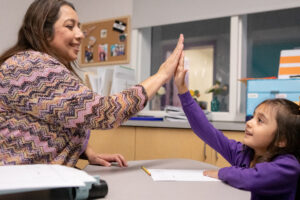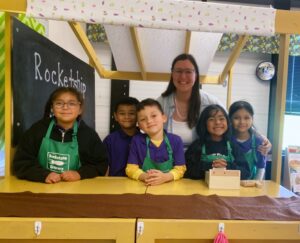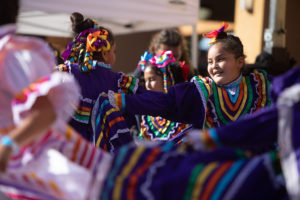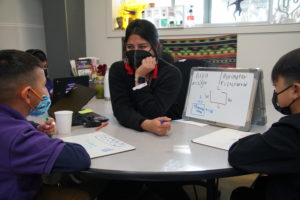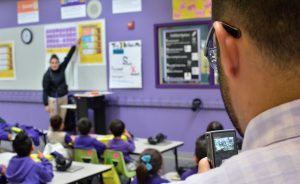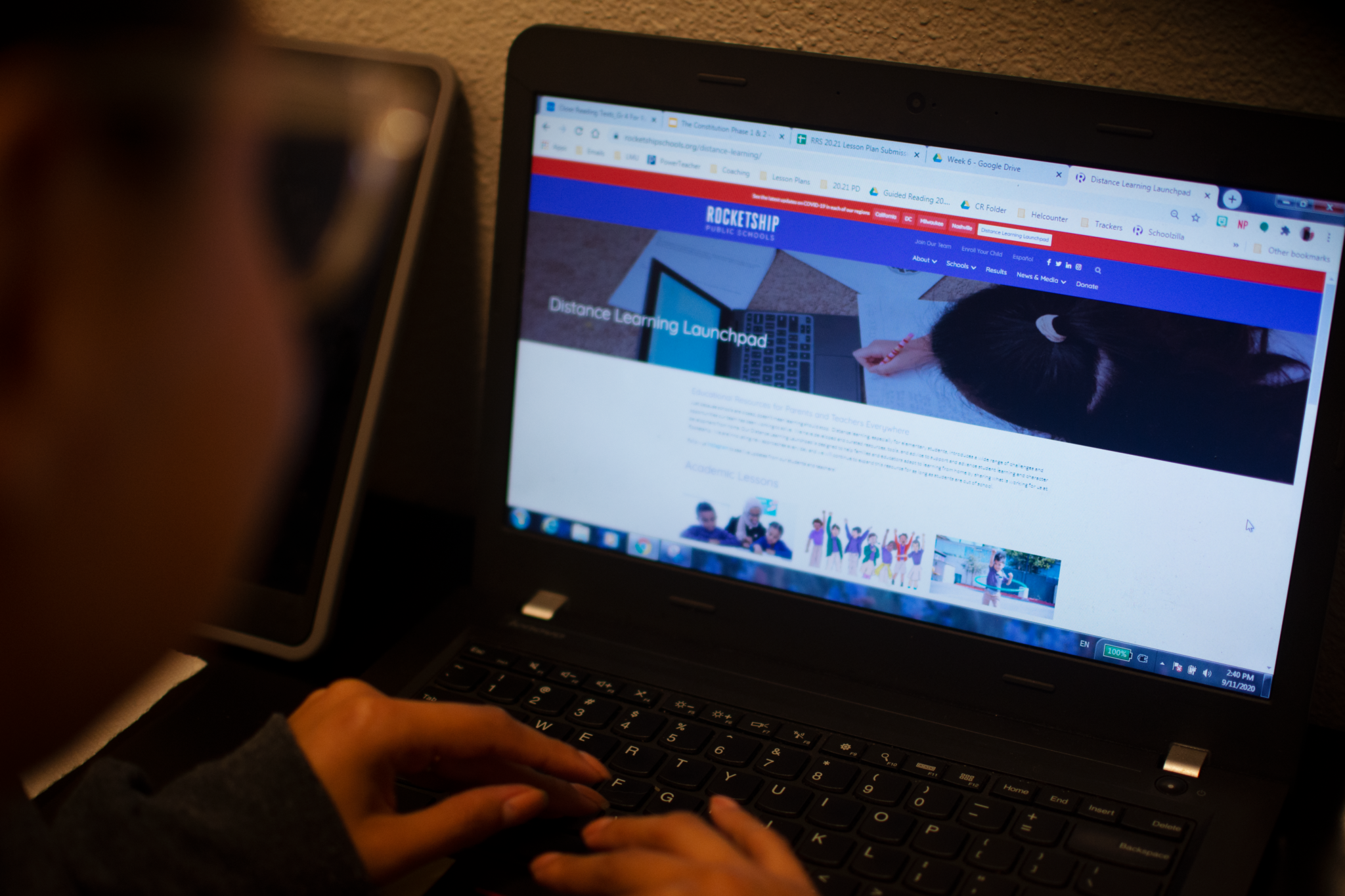
6 Lessons Learned About Better Teaching During the Pandemic
*This article was originally featured on Edweek.org.
If there is a silver lining to the heavy emphasis on remote and hybrid instruction during the pandemic, it is this: Students are getting more opportunities to work independently and at their own pace—and in the process, they are becoming better problem-solvers.
At least that is the take of educators working in schools where personalized learning is the centerpiece of instruction. They say the shift to remote and hybrid instruction has given them an opportunity to deepen their commitment to learner-centered approaches and build new strategies that will continue to be applied once all students are able to return to school buildings at full capacity.
“When we had to shift to remote, that mindset was already there—the mindset of pulling small groups, developing independent learners, making kids own their own learning,” said Katie Speth, the principal of Disney II Magnet School, a personalized learning pre-K-12 school in Chicago that is remaining fully remote for the fall semester. “In terms of logistics, remote learning is incredibly difficult—people don’t realize how much more time it takes teachers. You don’t have that instant feedback, you don’t have the ability to scan the room, but I think the mindsets were [already] there: ‘I know how to set the stage to help students.’ ”
Schools in personalized learning networks such as High Tech High, LEAP Innovations, Rocketship, and Summit Learning have had to make teaching and learning adjustments whether they are fully remote this semester or having students come to campus some or five days a week. These changes, educators say, have helped them become even more focused on the primary goals of personalized learning: tailoring education to address the individual strengths and weaknesses and personal interests of students.
One cautionary note, however, is that the research on the effectiveness of personalized learning was limited, at best, before the pandemic, and some personalized learning initiatives have prompted pushback and criticism from parents and students, who say the programs put too much emphasis on the use of technology and software algorithms to drive learning.
Here are some of the lessons learned so far.
1. Educators have no choice but to be flexible these days, and that’s a good thing.
Personalized learning has always required some degree of flexibility, but teachers say they must be even more nimble now. In schools that are still remote, teachers have to account for students’ individual situations and limitations at home. And in schools that have resumed in-person instruction, educators have to be ready to switch the mode of instruction on a dime as positive or presumed positive cases of COVID-19 occur.
“We’re realizing that we don’t have as much control over what the final product or task is going to look like,” said Heather Morrison, the instructional coach for Disney II’s high school campus. “It’s really pushing us to think of what are the different ways we could have students demonstrate what they know.”
For example, she said, teachers previously would assign a different type of final project to each unit—a writing assignment, video, etc. But now, depending on what it is they’re assessing, teachers are allowing students to choose which final project works best for them.
Said Speth: “I have really flexible teachers, but [remote learning] is even increasing that flexibility. Teaching is a profession where we like to control things, and there’s been a lot of letting go of control, [which is building] stronger, more-independent students.”
Prairie Heights Middle School in Evans, Colo., meanwhile, has resumed in-person instruction all five days a week. But Principal Stephanie Knox said teachers there have continued to use online tools so learning isn’t disrupted if students have to quarantine for two weeks due to a positive or presumptive positive COVID-19 case. The school already used the Summit Learning platform, but Knox said teachers are being even more creative with technology now than they used to be. (Summit Learning receives significant financial support from the Chan Zuckerberg Initiative, which also provides support to Education Week for its coverage of whole-child approaches to learning. Education Week retains sole editorial control over the content of this coverage.)
“Some of the tools [students have] been learning, like annotating text on Zoom—you would have never, never seen that in a classroom prior to the pandemic,” she said. “We’re developing different skills in students.”
2. Targeted support and explicit instructions are key.
Morrison said Disney II teachers have started recording themselves modeling tasks or delivering short lessons and posting those videos onto the school’s learning platform.
That’s a practice that teachers will likely keep when students return to campus, she said. Not only does it let students review instructions whenever they need to, but it’ll help them work more independently without relying on teachers to answer basic questions.
At Kairos Academies in St. Louis, students were already used to working online and at their own pace through the Summit Learning platform, but they had to adjust to doing the work without a teacher nearby. This semester, half of students are remaining completely remote while the other half are coming to campus two days a week.
The personalized learning public charter school, which serves 6th and 7th graders, has had to redesign its schedule to provide more support to students. Kairos introduced self-direction days at the start of the semester, where students were able to work independently from home.
“What we found was there was just no accountability there, and kids were just missing interactions [with their teachers and peers],” said Riley Foster, a 6th grade math teacher at Kairos. Now, teachers have increased the amount of time they spend with their students on self-direction days, including two facilitated virtual classes, a virtual group lunch with friends, and supervised work time for students who need extra support.
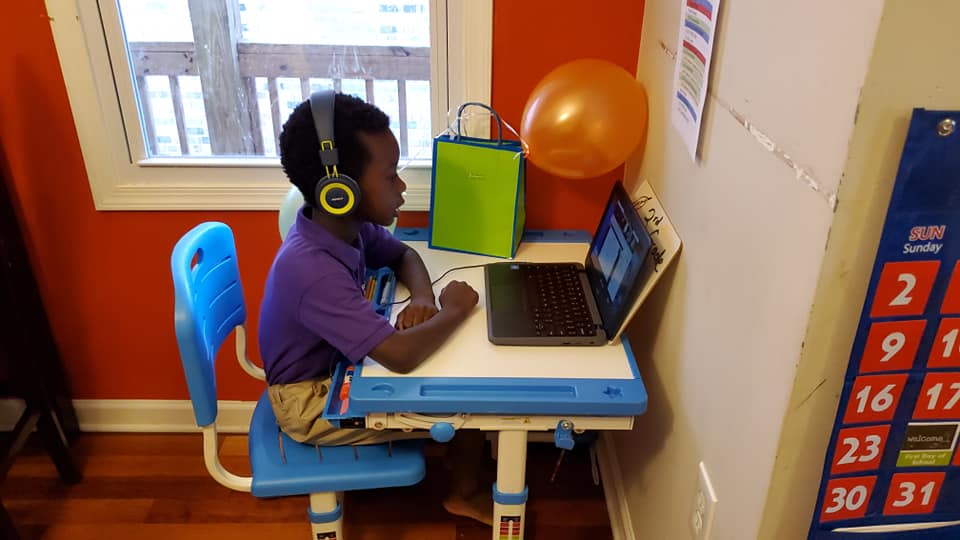 3. Students may need extra guidance managing schedules and completing assignments.
3. Students may need extra guidance managing schedules and completing assignments.
Kairos Academies also increased the level of support students had from their coaches. Since the school was founded two years ago, teachers have had a group of 10 students for whom they provide one-on-one support for executive functioning tasks, such as completing assignments on time and maintaining productive study habits.
Students used to meet with their coach one or two times a week, but last spring, the frequency increased to five times a week. “Coaches could check in every day: ‘I know you’re alone at your house, let’s set some goals. Do you know how to log in?’ ” recounted Gavin Schiffres, the chief executive officer of Kairos.
Schiffres said the full-time coaching model was so successful that teachers are continuing to meet with their students more frequently, even now that students are back on campus some days. This semester, Foster said she has been meeting with her “podlings” individually for 10-15 minutes three times a week. She helps them set goals for their learning, makes sure they’re on track with their assignments and able to navigate the Summit platform, and encourages them to channel their interests into their projects.
“There are some students who really thrive working on their own, and some who struggle a bit more and lack the skillset,” she said. “If it weren’t for the coaching model, self-directed learning would not be successful. [It’s] getting them to the point where they can take control of their learning.”
4. Project-based learning is still possible when done virtually.
Project-based learning is a key tenet of personalized learning, but educators say the switch to remote, hybrid, or socially distanced instruction made it difficult to do the same kind of robust projects that students previously did in person, with no social distancing limitations.
Still, the transition sparked new learning possibilities, said Brenda Vogds, the director of the Institute for Personalized Learning, which serves school districts that are engaging in personalized learning. She has seen educators more frequently encourage students to connect with experts over video chat.
“You’re not limited to the resources in your school walls,” she said. “You now have the opportunity to reach out into the community to make connections you may not have been able to make before.”
And some schools brought projects to their students’ homes. Eesir Kaur, the senior director of humanities and professional development for the Rocketship Public Schools network, which is still providing mainly remote instruction this semester, said campuses hosted a distribution day where families picked up materials for hands-on projects. For example, students picked up markers, paint, and poster boards to create a “get out the vote” campaign for a civic engagement lesson. For an engineering lesson, students picked up popsicle sticks to build a catapult.
5. Students still need opportunities to speak up and collaborate.
Educators also have to find creative ways to foster collaboration and student talk time in this unprecedented school year. Knox, the principal of the Colorado school that has opened for full in-person instruction, said students can’t have their desks side by side or work closely with one another, in order to maintain social distancing. They might still join a Zoom meeting from the classroom or use other virtual tools to work together without being nearby.
“It just takes a couple extra steps,” Knox said. “An easy way out would be to say, ‘Nope, everyone’s going to sit there and do the same thing at the same time.’ That’s not what we believe in.”
With remote instruction, Kaur said, one initial challenge was making sure young students had enough opportunities to talk in class. Typically, they’d do “turn and talks,” a classroom practice in which the teacher poses a question or discussion topic and students turn to a peer and discuss. But breakout rooms on Zoom were cumbersome for kindergartners.
Instead, one kindergarten teacher told students to bring their favorite stuffed animal to virtual class. That stuffed animal, the teacher said, would be their study buddy. Students would be responsible for sharing their thinking with their study buddy or telling it the sound they were learning.
In other words, the stuffed animal served as a “turn and talk,” Kaur said. The concept was so successful that Rocketship has replicated this practice across the entire network for grades K-2.
“You see little Lilos and Stitches everywhere, or parrots or teddy bears,” she said. “It’s really awesome.”
6. Remember that the challenges are helping build more independent learners.
While there have been some roadblocks over the past nine months, educators say they’ve seen students grow as problem-solvers and learners.
“When we transitioned to distance learning, it emphasized the idea that you move at your own pace because you are only trying to compete against yourself, you’re only trying to be a better version of yourself,” Rocketship’s Kaur said.
Krista Purnell, a school and district success manager for Summit Learning, added: “Once the pandemic’s over, there may be something else that comes along in the world, but having those habits of resilience, self-regulation, agency … we’re helping schools build that now.”
In fact, Vogds of the Institute for Personalized Learning said this transition has forced schools to take a hard look at their instruction and make sure they’re centering it on students and their individual needs.
“Education’s future is not direct instruction, education’s future is learner-centered practice,” she said. “If we miss this opportunity, I’ll be very disappointed.”
Coverage of whole-child approaches to learning is supported in part by a grant from the Chan Zuckerberg Initiative. Education Week retains sole editorial control over the content of this coverage.
Published on November 17, 2020
Read more stories about: Uncategorized.
In the Classroom
How to Foster a Growth Mindset in the Classroom
| April 10, 2025
Learn how to cultivate reflection, embrace challenges, and promote perseverance in yourself and in your students.
Read more ⟩How to Improve School Culture
Jeremiah Davis, Paraprofessional, Rocketship Dream Community Prep | March 3, 2025
Ready to ramp up moral at your school? Weave these nine celebrations into your school year!
Read more ⟩How Coaching in Schools Improves Outcomes
Rockesthip Public Schools | Feb 4, 2025
Learn how live coaching and weekly feedback sessions can help your teachers feel more supported year round!
Read more ⟩Parent Conference Tips for First Year Teachers
Jeremiah Davis, Paraprofessional, Rocketship Dream Community Prep | January 6, 2025
Looking for top parent conference tips? Prepare with advice from our educators.
Read more ⟩First Year Teacher? Here are Five Mistakes to Avoid.
Jeremiah Davis, Paraprofessional, Rocketship Dream Community Prep | November 1, 2024
See what mistakes most first year teachers make and how you can get ahead this school year with some simple tips from a fellow educator.
Read more ⟩3 Classroom Systems New Teachers Swear By
Rocketship Public Schools | Sept. 30, 2024
As a first year teacher, establishing a smooth and productive classroom environment can feel a tad overwhelming. Thankfully, these simple strategies can go a long way.
Read more ⟩How Co-Teacher Collaboration Can Benefit Your Classroom
Featuring Alejandra Chavez, Education Specialist at Rocketship Mosaic Elementary | June 10, 2024
Hear from Ms. Aly about how a small team of educators can make a big difference in student outcomes through thoughtful planning, focused collaboration, and personalized accommodations. Ms. Aly was one of our highest-performing educators in California for the 23-24 school year.
Read more ⟩How to Spark Joy in ESL Classrooms with a Multilingual Learning Clubhouse
Featuring Ms. Amy De La Rosa, Multilingual Specialist, Nashville Northeast Elementary | June 1, 2023
Listen in to an audio interview with Amy De La Rosa, a Multilingual Specialist who has worked as an educator for over 14 years and found an innovative way to help her students learn English in a more accelerated, playful way.
Read more ⟩Supporting Parents of Multilingual Students in Family/Teacher Conferences
Emma Volpe, Rocketship United Academy | June 1, 2022
Get thoughtful insight on how to create a more inclusive family-teacher conference environment.
Read more ⟩5 Ways to Strengthen Relationships in the Classroom
James Cross, Assistant Principal, Rocketship Nashville Northeast Elementary | February 20, 2022
A new age of education calls for a new level of connection. Here are some key tips to strengthen relationships in your classroom this school year.
Read more ⟩5 Ways School Leaders Can Coach and Support Teachers
Eesir Kaur, Director of Professional Development | October 15, 2020
Are you a school leader looking to coach your teachers more effectively? Here's what works for us.
Read more ⟩



